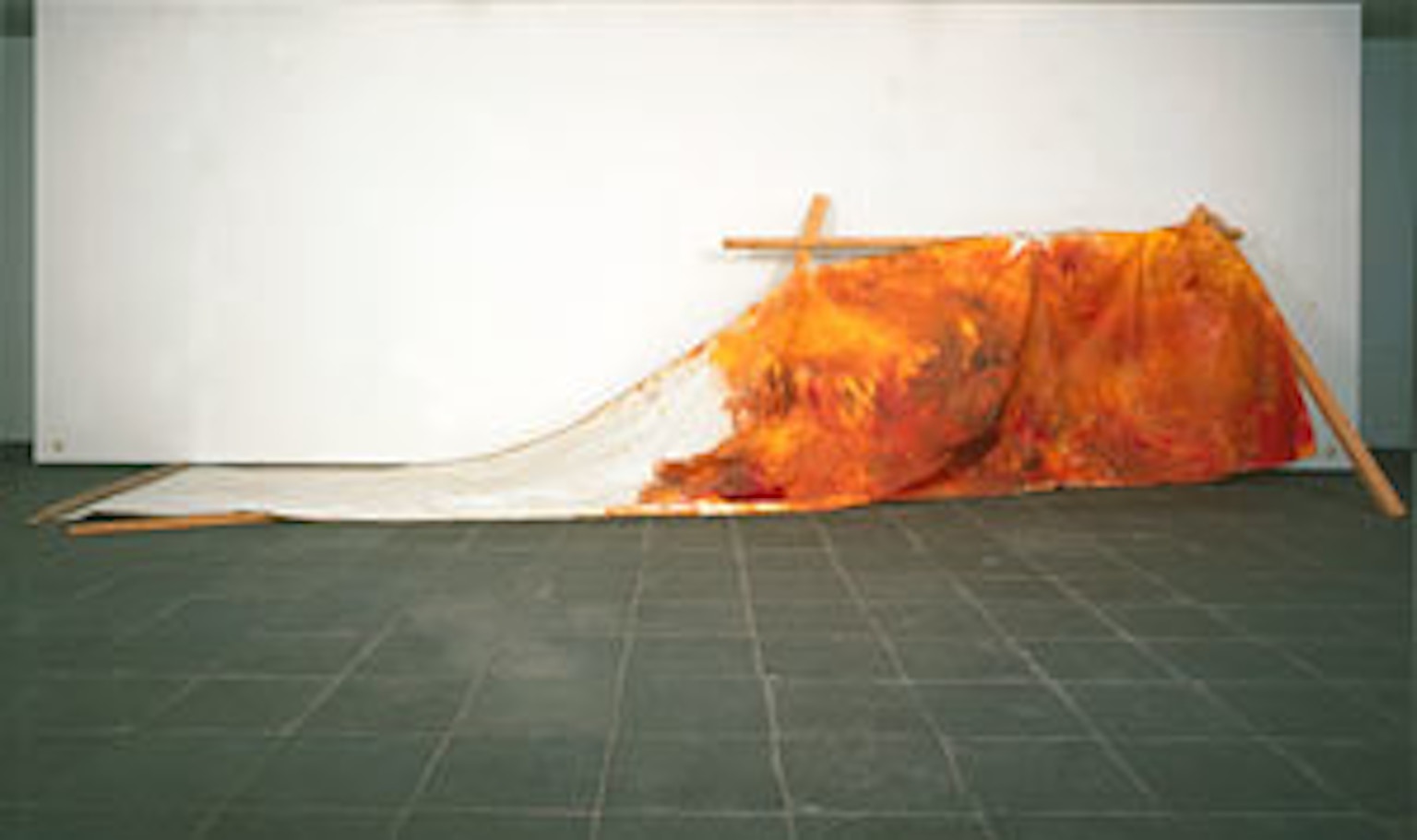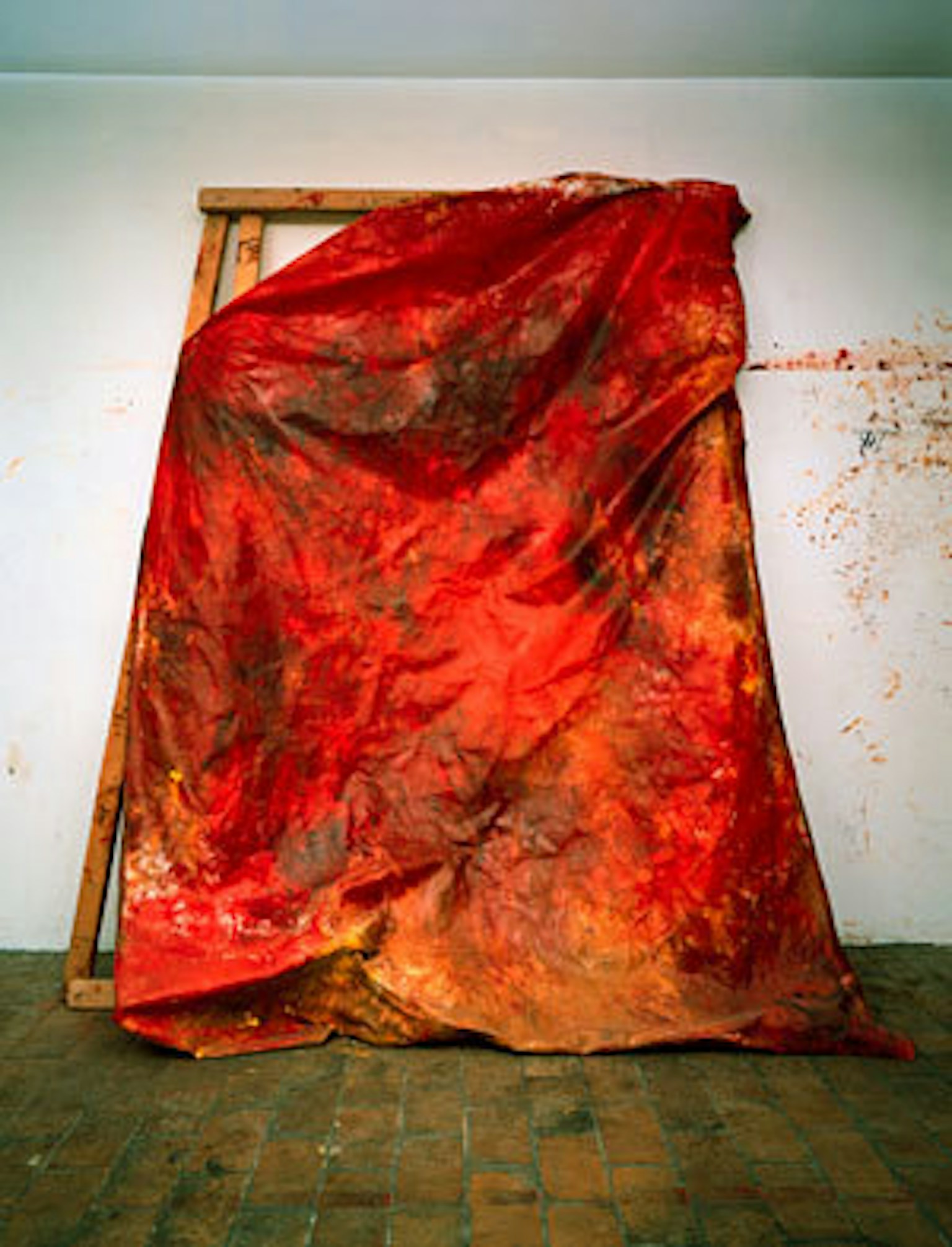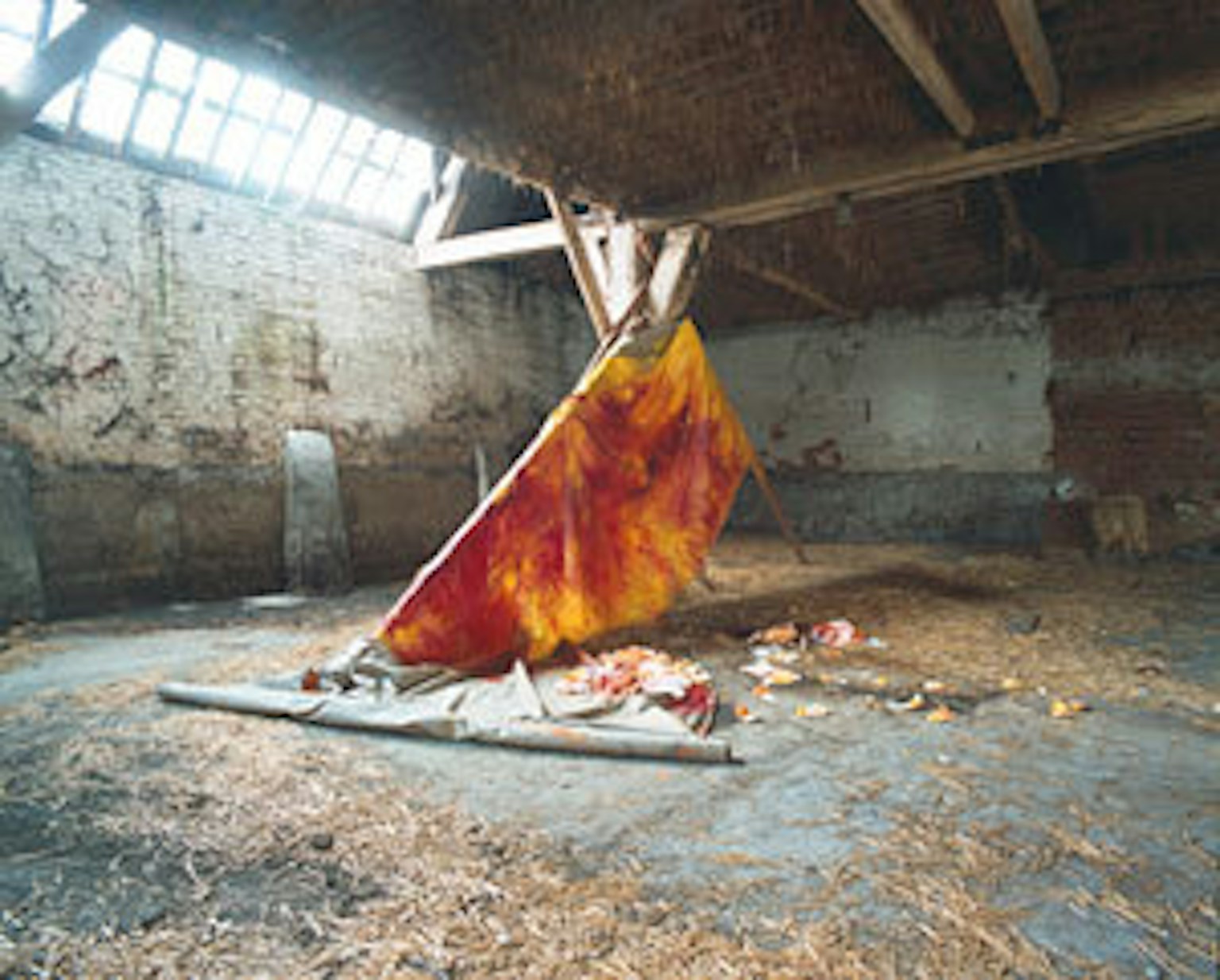In 1996 Jan Hoet invited Masato Kobayashi to take part in the ‘Red Gate’ exhibition in what is now the service wing of the museum.
He created two pieces there: a vertical, yellow-orange sea of flames and a monumental deep red landscape. Since then, Masato Kobayashi has exchanged Japan for Belgium, Tokyo for Ghent. His view of Ghent is as the city of the Mystic Lamb and the Van Eyck brothers or even the place where painting may have been born (though painting has several ‘birthplaces’). After participating in the group exhibitions Serendipity (Watou, 1999), Over the Edges (Ghent, 2000) and only recently Epiphany (Heverlee, 2000), Kobayashi’s exhibition at SMAK is his first one-man show on the European continent.
In his view, painting denies the duality of support and paint. Painting begins even before the canvas is stretched - it comprises the paint and the canvas and the wood. The paint cannot be a parasite on the canvas or frame, and only explores and achieves its full significance in interaction with the other parts of the whole: this is painting as Gestalt. This is why he prefers to call it ‘oil with canvas’ rather than the usual ‘oil on canvas’. Or, to use his own words, ‘If from the beginning there is a support to which I add a pictorial level by, for example, drawing a line, I end up with two levels, that of the support and that of the image. In that case the painting does not exist in itself, because it has the support behind it. What I want to create is a painting in which all there is, is the image. This is not a question of whether the painting is figurative or abstract. I want a painting to assume the form of ‘something that is abstract’.’ The process in which one of Kobayashi’s paintings is created is informed by this attitude: the canvas is first spread out on the floor and is gradually laid over the stretcher as it is painted. In this way he takes up a position with regard to the history of painting itself, which started with marks made on the ground, evolved to cave paintings and ultimately took the form of a stretched canvas hanging on a vertical wall.
By contrast, Kobayashi’s canvases hang where they were last let go, the wooden battens are nailed together provisionally and the paint continues on the way Kobayashi has made ready for it. He does not paint, but forces, pushes and presses the paint, canvas and wood into the space with his hands and his whole body, away from the two-dimensional plane, as if destroying the existence of a painting in order to reinvent painting. Masato Kobayashi’s paintings usually comprise monochrome tints, shades of one particular colour, such as blue, yellow or red-brown. When asked why in an interview, he replied, ‘I love motorcycle racing very much. At normal speeds you see the landscape, but when you accelerate it becomes blurred and the colours are mixed up together. At even higher speeds the colours merge into monochrome. When you go faster still, all that’s left is white, a pure bright light. At least, that’s what I think. When I see that light, I shall be dead. I cannot see it while I am still alive, but I know there is a state without form or colour. It is that state I want to paint.’ Kobayashi has so far not yet attained this speed. He is waiting until his work destroys itself, until the image and the colour blind the light.



